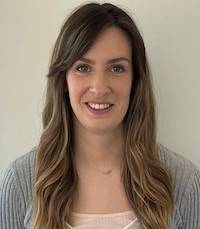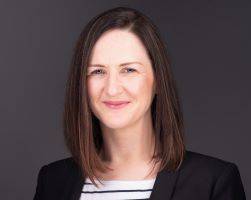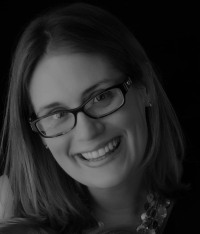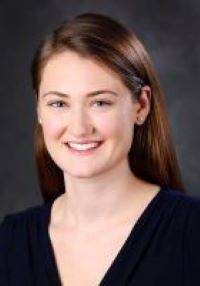Visual Communication
Visual communication researchHumans communicate not only through auditory speech, but also through vision. Visual routes to communication include reading, visual speech (lipreading), gesture and, for those who are deaf, sign language. Our research uses both behavioural and neuroimaging approaches to further our understanding of these modes of visual communication. In particular our work involves research with people who are born deaf. Exploring the brains of individuals with altered sensory and language experience offers unique insights into the limits of neural plasticity and the cognitive and neurobiological conditions under which language develops. Our research addresses a fundamental issue in cognitive science: how does experience shape language and the brain? In addition to informing our basic understanding of brain development and the neurobiology of language, aspects of our research will also ultimately inform intervention strategies for children born profoundly deaf both in terms of education and cochlear implant programmes. The Visual Communication Research Group is also part of the UCL Deafness, Cognition and Language Research Centre, where Kearsy Cormier is Director. Mairéad MacSweeneyGroup Leader+44 20 7679 1157 |
Group Members
Independent Research Fellows
- Carly Anderson

carly.anderson@ucl.ac.uk I am interested in how deafness and visual speech (lipreading) shape visual attention and social cognition (e.g., face processing). I use electroencephalography (EEG), functional near-infrared spectroscopy (fNIRS) and behavioural measures to examine how the brain adapts after cochlear implantation in deaf adults and children, and how sound and vision are used together to support communication.
Research Assistants
- Elisabeth Taunton

I am working as a Research Assistant with Professor Mairéad MacSweeney at the Institute of Cognitive Neuroscience and Deafness, Cognition and Language Research Centre (DCAL). We are currently undertaking a longitudinal study funded by the Wellcome Trust looking at the role of visual inputs – lipreading, fingerspelling, British Sign Language (BSL) – in reading development in deaf children.
I was born profoundly Deaf and developed speech and lipreading as my main methods of communication later followed by British Sign Language. I attended mainstream education and went on to achieve a 1st Class Honours BSc degree in Physiology at the University of Aberdeen followed by an MSc in Physiotherapy at King’s College London.
My career as a Physiotherapist took me all over the UK. During Covid I set up my own business in Physiotherapy and Pilates and qualified as a Lipreading Tutor with the City Lit.
As a Research Assistant at UCL I wanted to combine and apply my background knowledge and skills to the role. I also aim to apply research findings from past and current research in language and cognition to further work with deaf children, teenagers, and adults.
I am keen to use my lifelong experience as a deaf person to give something back to the deaf community. I want to build upon previous experience of working with Leeds Deaf Club, RNID, GB Deaf Women’s Football, UK Deaf Sport, Mary Hare School, and Reading Deaf Centre to further contribute to deaf wellbeing and education in the UK and beyond.
Associate/Alumni
- Tyron Woolfe

Reading research has focused on mappings between auditory representations of spoken language and written words. However, this is a limited view of language. Visual spoken language input (visual speech/ lipreading) is increasingly being recognized as important to language development and reading development not only in deaf children, but also in hearing children. This is a longitudinal study over 3 years where deaf and hearing children are being tested and data will be subsequently analysed.
- Evelyne Mercure

E.Mercure@gold.ac.uk Evelyne is a senior lecturer in the department of psychology at Goldsmiths, University of London. She is interested in infant neurocognitive development and the role of early communicative experience in shaping this process. She uses functional magnetic resonance imaging (fMRI), event-related potentials (ERPs) and near infrared spectroscopy (NIRS) to investigate how the infant brain develops functional specialisation for language, voices and faces. She also uses eye-tracking and behavioural methods to clarify links between brain and cognitive development in infancy. Evelyne's most recent work has focused on bilingual infants, deaf infants as well as hearing infants with deaf mothers.
- Victoria Mousley

Broadly, Victoria is interested in how children’s early interactions with others shape the way they learn and develop. She is now a postdoctoral researcher at Birkbeck, University of London’s ToddlerLab. Her research examines the neural and behavioural dynamics underlying successful interactions between preschoolers and their parents, siblings, and peers. She uses wearable techniques like functional near-infrared spectroscopy (NIRS), motion tracking, and head-mounted eye-tracking to conduct hyperscanning studies with young children in real-world environments.
Victoria completed her PhD in the Visual Communication Group in 2022 supervised by Professor Mairéad MacSweeney and Dr Evelyne Mercure. During this time, she investigated the impact of early language environments on speech perception and attention to faces in bilingual and deaf infants. She also used observational video coding to quantify patterns of joint attention and contingent communication during naturalistic parent-child interaction. She continues to collaborate with Dr Mercure on similar work with deaf parents who use spoken and signed language with their hearing infants.
Victoria is from the US and learned American Sign Language as her first sign language, but she is now a trainee British Sign Language interpreter.
 Close
Close


